Katzhagen - Archive - January 2008
Pimp my Dashboard
I finally gave up - no more attempts to accomplish something meaningful outside. Too dark, too wet, too cold, too windy, too ... and so I remembered an idea which sprang to mind a couple of winters ago :
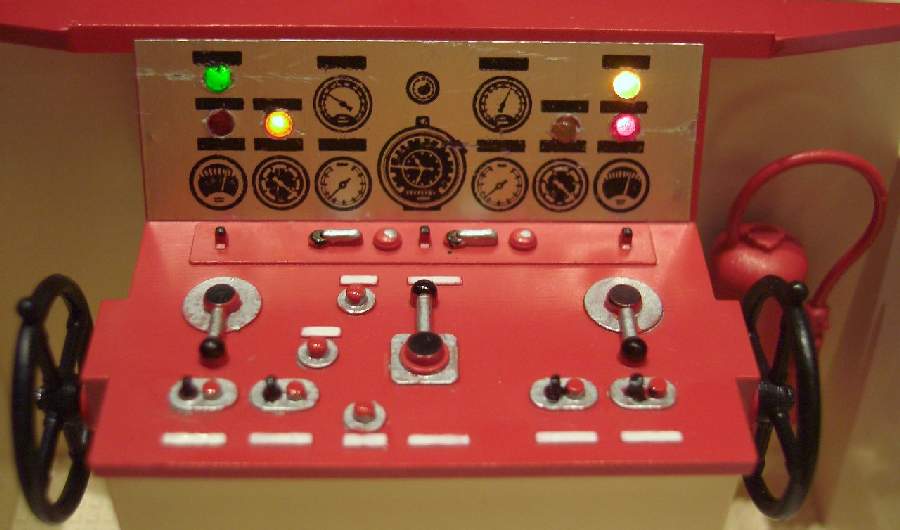
First off, the result.
A minor upgrade for the V51's dashboard
Holes with a diameter of 2mm where drilled through the control panel in those places where immitations of control lights were printed. 1.8mm LEDs were fitted into these holes then and fixed with a drop of glue afterwards.
The handles and switches were painted in black and silver, which resulted in a realistic look of these elements.
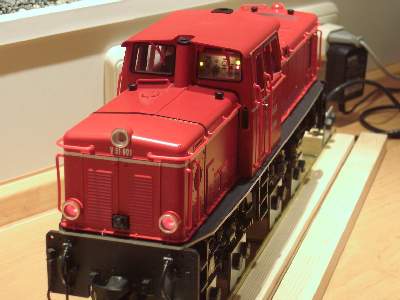
Rear view with a glimpse into the upgraded cabin
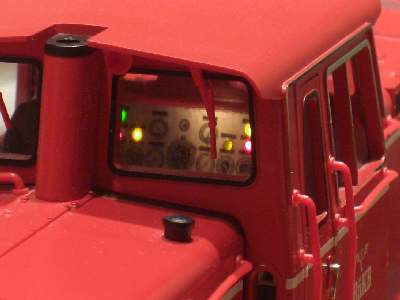
A closer look
Opening the housing was quite simple - just 8 screws had to be removed from
the loco's bottom side (some of them tend to hide below the drives ;-).
Beneath the operating panel inside the cabin there is plenty of space for
mounting the LED's electronics.
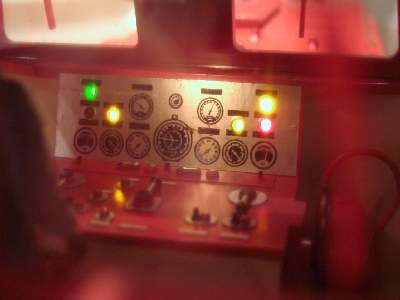
View into the cabin through one of its windows
On the right: The driver's place after the upgrade
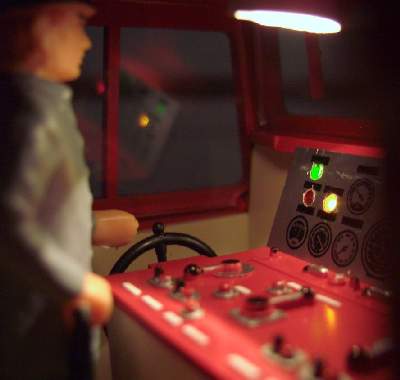
The interior's illumination also was modified a bit - a piece of aluminum
pipe (10mm in diameter and 12mm long) was applied. This resulted in a
magnificent effect.
As I was at it, the RhB Tm2/2 92 tractor was upgraded as well...
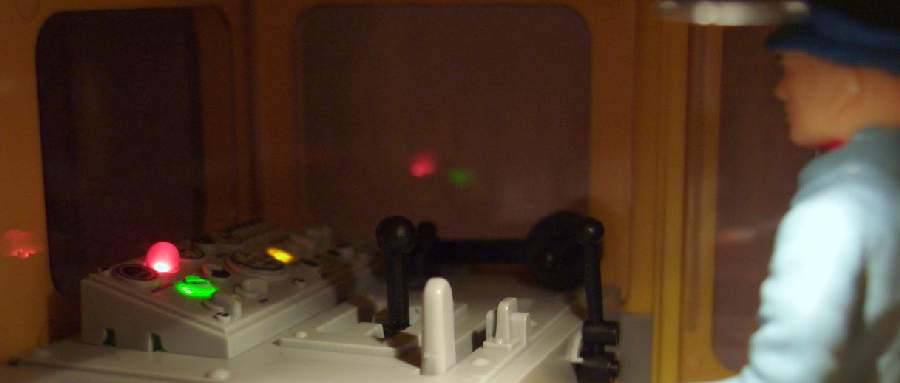
Modifying both of the locos took no longer than two days (sufficient pauses included).
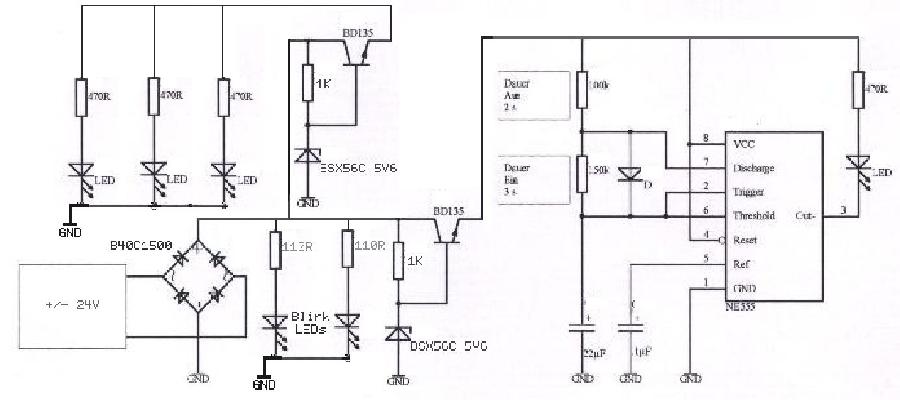
Standard parts only...
Two stabilized 5.6V sources provide power to all of the 6 LEDs on the control panel. Three of the LEDs are permanently on, two of the LEDs are flashing LEDs (1Hz and 1.5Hz respectively) and the 6th LED is driven by the NE555 chip so that it flashes "asymetrically".
I'm quite curious what will spring to mind next month...
As I was at it, the RhB Tm2/2 92 tractor was upgraded as well...

Modifying both of the locos took no longer than two days (sufficient pauses included).
The wiring diagram for the LEDs on the V51's dashboard

Standard parts only...
Two stabilized 5.6V sources provide power to all of the 6 LEDs on the control panel. Three of the LEDs are permanently on, two of the LEDs are flashing LEDs (1Hz and 1.5Hz respectively) and the 6th LED is driven by the NE555 chip so that it flashes "asymetrically".
I'm quite curious what will spring to mind next month...

